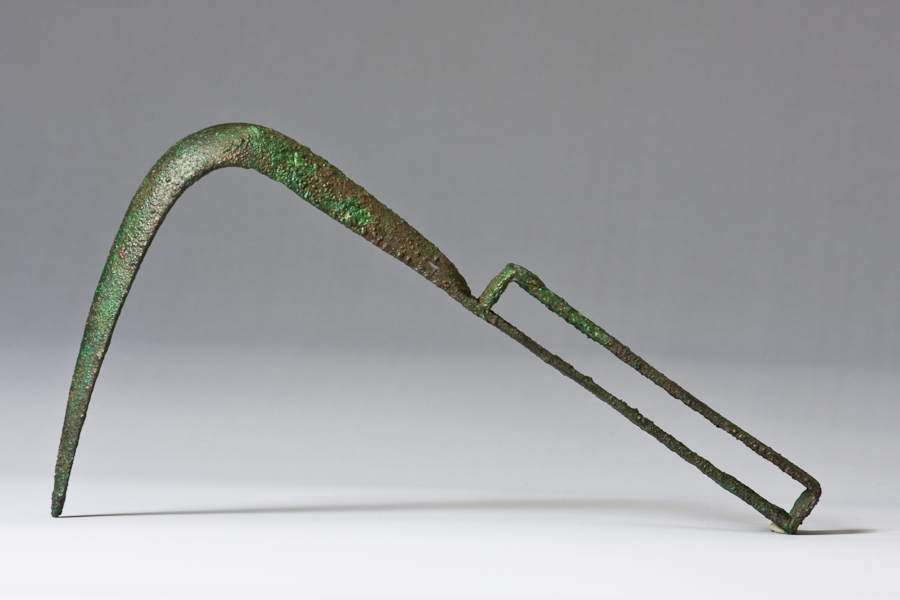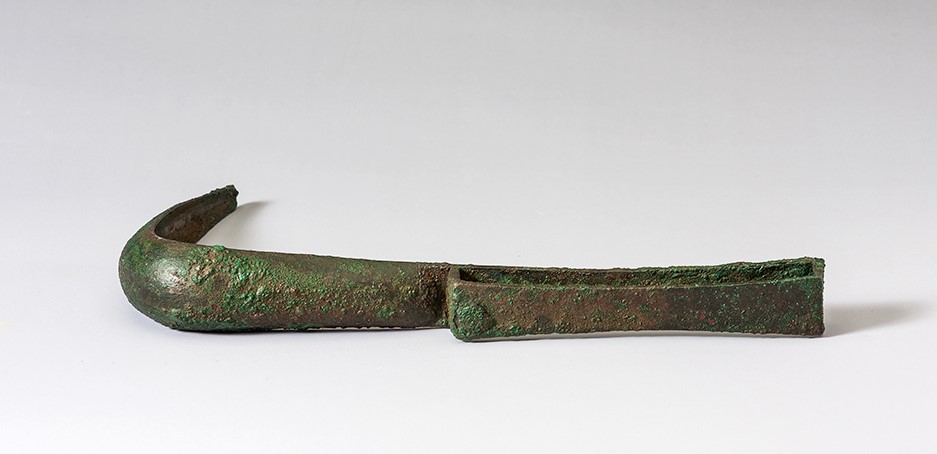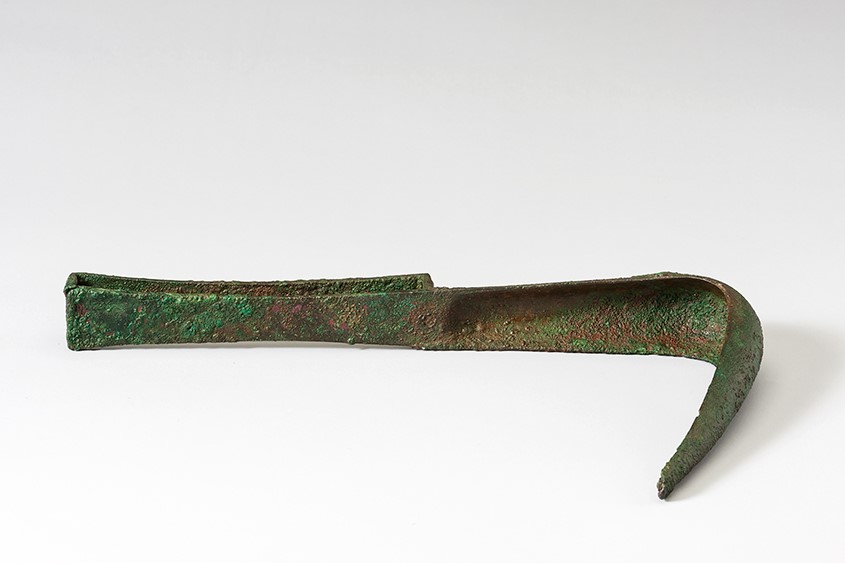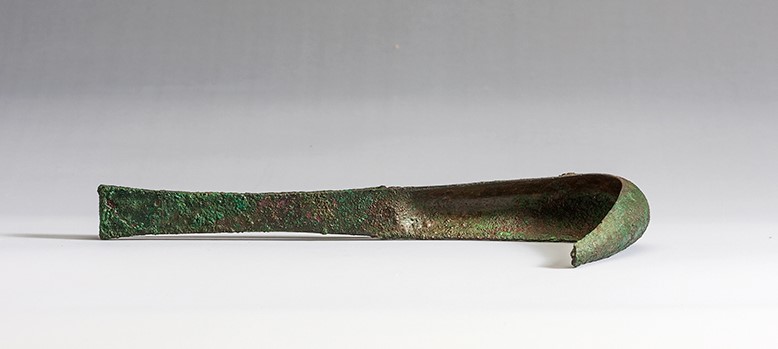Title: Bronze Strigil - 1968.09
Acquisition number: 1968.09
Author or editor: J.R. Green
Culture or period: Late Hellenistic.
Date: 1st century BC - 1st century AD.
Material: Metal - Bronze
Object type: Tools and instruments
Dimensions: 177mm (l) × 23mm (w)
Display case or on loan: 11
Keywords: Hellenistic, Roman, Strigil
Folio Fine Art Ltd (London), Catalogue 51 (January 1968) no. 598 (ill.); J.R. Green with B. Rawson, Catalogue of Antiquities in the Australian National University, A.N.U. (Canberra, 1981) 100.
1968.09
Bronze Strigil
Purchased. Length 17.7cm; width 2.3cm.
Intact and in good condition although there is some slight corrosion of the surface.
The blade has a sharp curve. The handle has squared turns at each end and is attached to itself rather than the blade.
Strigils are known from throughout classical antiquity: indeed they were a standard part of an athlete’s equipment. No detailed typology of the instrument has yet been worked out but one may observe that there is a tendency for the curve of the blade to become more abrupt; in earlier examples the handle tends to have a rounded end and to be attached by a plate to the beginning of the blade. Lysippos in his Apoxyomenos (if the copyist is to be trusted) gave the strigil a broader, more regularly curving blade than this. For a useful series of examples, see M. Comstock and C.C. Vermeule, Greek, Etruscan and Roman Bronzes (Boston 1971) nos 588-9 and 612-619, especially 616. Important too is the article by M. Bolla and A. Buonoparte “Strigili del Museo Archeologico di Verona”, Aquileia Nostra 81, 2010, 413-444: it deals with a large collection and gives excellent discussion. Our example is Late Hellenistic.
It is important to remember that they were used by women too as is evidenced by illustrations and their discovery in the graves of women: H. Marwitz, “Eine Strigilis”, Antike Kunst 22, 1979, 72-81; F. Colivicchi, “Lo specchio e lo strigile. Scambio di simboli e scambio fra i sessi”, in: F.-H. Massa-Pairault (ed.), L’image antique et son interprétation (Collection de l'École française de Rome 317, Rome 2006) 277-300; E. Zachariou-Kaila, “Personal Grooming: Metal objects from Roman Cyprus”, Cahiers du Centre d'Etudes Chypriotes 39, 2009, 325-346; T. Bogdanova, “Metal Instruments associated with Woman’s Beauty Care (based on data from the necropolis of Apollonia Pontica”, Proceedings of the National Museum of History (Sofia) 28, 2016, 59-80.
There is a thorough discussion of the instrument in E. Kotera-Feyer, Die Strigilis (Frankfurt 1993); for representations of it, see also her article “Die Strigilis in der attisch-rotfigurigen Vasenmalerei. Bildformen und ihre Deutung”, Nikephoros 11, 1998, 107-136. On the symbolism of its use in representations, one may also notice B. Kratzmüller, “Die Strigilis im antiken Athen. Ein Gerät der Reinigung als geschlectsspezifisches Symbol und als Zeichen im religiösen Symbolsystem”, in: R. Lindner and N. Sojc (eds), Geschlechterdifferenz in religiösen Symbolsystemen (Münster 2003) 91-134.
Folio Fine Art Ltd (London), Catalogue 51 (January 1968) no. 598 (ill.); J.R. Green with B. Rawson, Catalogue of Antiquities in the Australian National University, A.N.U. (Canberra, 1981) 100.



